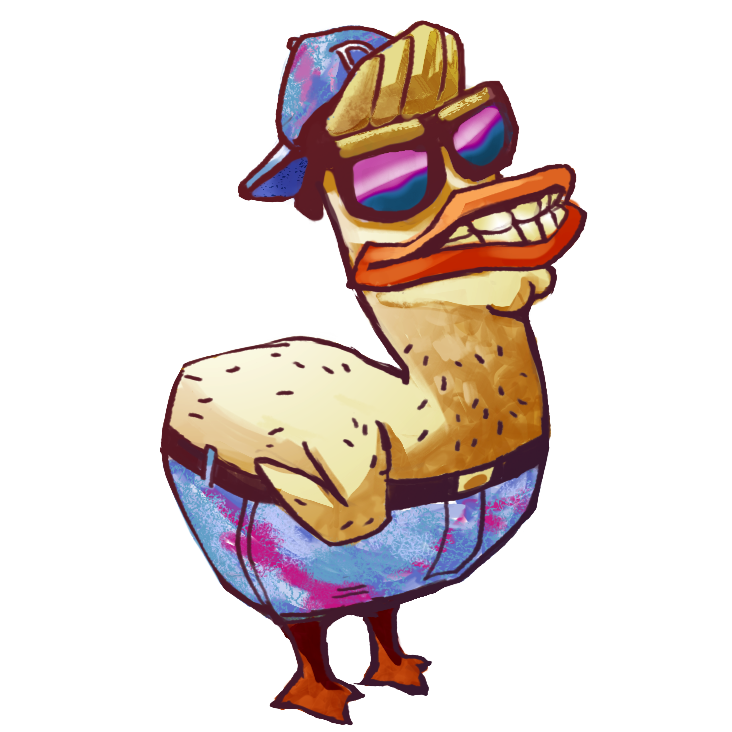Albion is an Overlooked Venture Into an Alien World
The story of Blue Byte's science fantasy RPG Albion, and the people behind the game.

Role-playing games have their fair share of clichés; The Dark Lord stole the crystals, the girl that you saved in the woods has latent magical abilities and the wizard in a gray hat is willing to teach you the Fireball spell as long as you help clear the wolves near the edge of town.
There’s a breadth of games that conform to the established template, but finding a game that breaks the mold of thematic- and genre conventions – a sui generis-game – can sometimes feel like searching for the proverbial needle in a haystack.
Once in a while though, you’ll come across titles that for whatever reason stand out as off the beaten path. For those who aren’t discouraged by older titles, Blue Byte‘s Albion can be that type of experience.
Albion is a veritable oasis of unique thematics and ingenious world-building. It’s a special game in part because its creators have given it all the hallmarks of a classic German role-playing game – including the archetypal deep lore and intricate game systems – and in part because the game predates the modern-day infatuation with streamlined High Fantasy.
When the game was made, fantasy tropes weren’t as formulaic and established as they are today. High fantasy was a prevalent genre, but it had to coexist with the romantic barbarians of the “Sword and sorcery”-genre and the chrome- and crystal-armored spacefarers of the pulpy “Science fantasy”-genre. There was a deeper well to draw from, with an endless variation of subgenres that already had mainstream acceptance. Artists were allowed a greater range of expression when they weren’t limited to established tropes, and were instead incentivized to search for the strange and obscure.
At the same time, Albion’s creation wasn’t entirely devoid of challenges. According to some of the game’s developers, the project had little internal support due to a lack of interest in role-playing games. In addition, Albion’s release coincided with a dip in the role-playing game market – a period which according to some lasted until several years down the line when games like Baldur’s Gate eventually repopularized the long-form role-playing genre.
Still, Albion is a perfect snapshot of a time when mainstream fantasy was conceptually diverse. It embodies many of the thematic characteristics that can make a role-playing game feel altogether new – both for its time, but especially when looked at through a more contemporary lens.
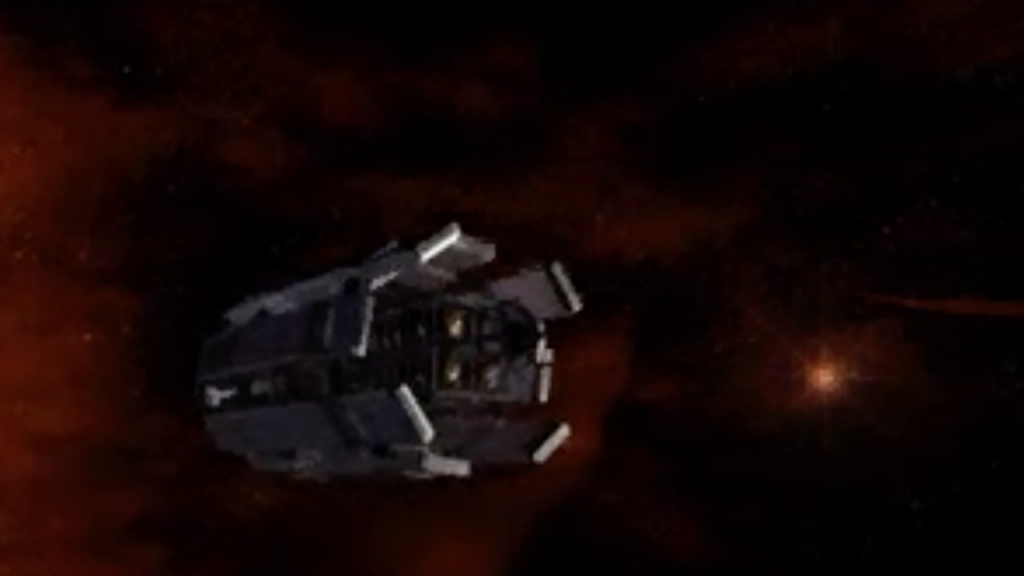
Albion begins by establishing a storyline that doesn’t beg you to suspend your disbelief; It’s the future, but it’s a believable future. You’re Tom Driscoll, a pilot on board the intergalactic mining ship “The Toronto.” Your employer is the second-largest multinational corporation on Earth, and you’re preparing for an upcoming assignment where you’ll be piloting a small surveying spacecraft bound for a newly-discovered- and unexpectedly mineral-rich planet referred to as “Nugget.”
When you gain control of your character, you find yourself in your cabin bed on board The Toronto. Having just awakened from a recurring nightmare, your girlfriend comes over to check in on you before your flight. You chat for a while about life and work before a blaring intercom message calls on you to prepare for your surveying mission, and for you to make your way to the hangar where your space shuttle awaits.
By modern-day standards this might be enough of a prelude to warrant skipping ahead to the meat of the game, but Albion opts for a more measured approach. While it nudges you towards your primary objective, it also allows you to leisurely amble through the ship’s corridors should you instead choose to explore the range of things to see and do on board the ship – and to get a better understanding of the world that you find yourself in.
While exploring the ship, there’s an abundance of things to discover. You’ll find information consoles that offer news about about trade union conflicts, space patents, political fiascos and other current events, but perhaps more interestingly The Toronto houses friends, colleagues and strangers to speak with.
Interacting with other people will expose you to Albion’s comprehensive dialogue system, which allows you to either let conversations flow naturally- or to ask questions based on keywords that you’ve learned in previous conversations. Most characters will be happy to provide you with rumors and information, but when used correctly the keywords that you learn have the potential to unlock entirely new areas and scenarios in the game.
A good example of one such segment is friend and technician Joe Bernard, who works in the far north-eastern corner of the ship. Upon speaking with him, he fills you in on a terrible explosion that took place the night before. When pressed for more information, he’ll reluctantly give you the maintenance tunnel access code which leads to the cordoned-off scene of the accident.
The maintenance tunnel introduces the game’s first few puzzle sequences, and eventually leads you to discover a hidden gun in the vicinity of the scene of the accident. If you’re clever enough to reverse-engineer the aforementioned puzzle, the game will allow you to smuggle the gun back out from under the nose of the ship’s security guards.
By stashing the weapon in a container, you can return to collect it at a later point. Doing so will allow you to bring it back to Joe Bernard, and uncover a kernel of an important plot twist that won’t be revealed until later in the game. The item will also act as a powerful starter weapon, for when the game eventually introduces combat.

The payoff from sidetracking into alternate areas is significant to say the least, and these types of optional player journeys – despite almost feeling wasteful for being easy to overlook – are a welcome pattern that continues throughout the remainder of the game.
If it isn’t clear, Albion is a game that prides itself on its rigorous and comprehensive design. It’s consistently smart and deliberate about how it introduces these alternate segments, which makes stumbling upon these secrets stand out as a defining characteristic of the game.
Exploration in Albion feels fresh. Whereas other games might have you walk over every tile and press on every wall in search of some secret passage that may or may not reveal a sidequest or a crumb of lore, Albion is ready to reward your curiosity with fully fleshed-out segments, should you happen to indulge in organic exploration or arbitrarily go off-track to see what boundaries you can test.

The game’s comprehensiveness isn’t surprising. Before its release Albion had been baking for over 2 years at Blue Byte Software (since acquired by Ubisoft) under a seasoned team of veteran game developers, including key individuals Erik Simon, Thorsten Mutschall, Jurie Horneman, and Christian Jungen.
The group had extensive technical- and artistic experience owed in part to having spent their teenage years pushing the limits of the Atari ST as members of the demoscene computer art subculture – but perhaps most importantly from having spent their early 20s releasing a comprehensive catalogue of games through their own game development studio, Thalion Software.
Udo Fischer and I met Holger Flöttmann – the main founder – briefly at Rainbow Arts. He later contacted us when he wanted to do his own thing, and so Thalion was born.
Erik Simon, project lead on Albion
Thalion Software was founded by Holger Flöttmann, Udo Fischer and the aforementioned Erik Simon over a common interest in subverting technological restraints. The intent behind the company was to leverage the technical- and artistic insights that the team had acquired as demoscene artists, in order to create high-quality cutting-edge games for the Atari ST and the Amiga.
The studio primarily released arcade, puzzle- and action titles, but their perhaps most notable works included the role-playing game Amberstar and its sequel Ambermoon. The two games constituted the beginning of an unfinished trilogy that would later come to play an important part in the creation of Albion.

Amberstar was first conceptualized as an independent project by homebrew developer Karsten Koeper – an avid role-playing game designer who at the age of 17 had published the first-ever German role-playing game “Mythos 1” for the Commodore 64 and the Atari 8-bit family.
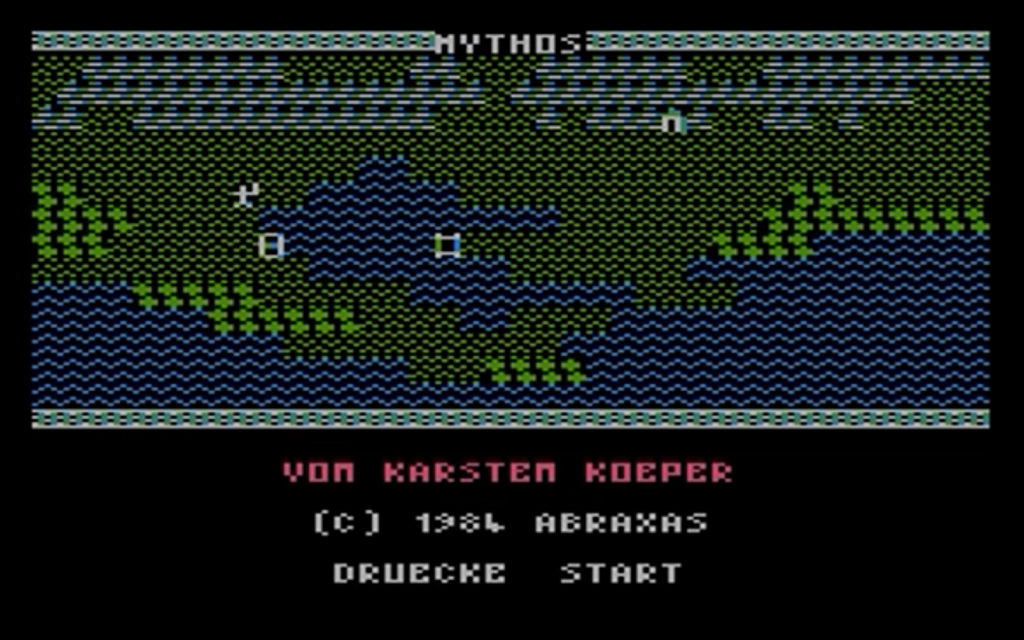
Mythos 1 was an impressive title that borrowed heavily from Ultima I. It utilized a bespoke role-playing game toolkit for the GFA BASIC programming language, which Karsten himself had developed. The title received favorable reviews from German critics on account of being a local release, which prompted Karsten to more seriously pursue a career in game development.
At this point Thalion Software had published a handful of games and were in the process of hiring more people. They actively recruited from their childhood circles until they had a laundry list of demoscene groups from which they’d sourced talent: The Exceptions, The Carebears, The Lost Boys, TNT Crew, Gigabyte Crew and the Quartermass Xperiment to name a few.
I was part of the demo group “The Exceptions” (TEX) for several years before Thalion. I was never a good programmer, but I liked to create art. I was technical enough to be able to design new effects, and brainstorm with the coders on how to do them
Erik Simon, project lead on Albion
Alongside these hires, Karsten also started doing work for Thalion as a tester. At the same time – and using the suite of role-playing game development tools that he’d previously created – he’d started working on his next big role-playing game: Amberstar.
Karsten’s tools allowed for more convenient management of role-playing game maps- and characters, which especially suited a project of Amberstar’s scope. These personal projects of his eventually caught the attention of his coworkers at Thalion, to the point where they eventually decided to throw their weight behind the game as a company-backed product. Karsten accepted, and was subsequently placed at the helm of the project.
The Amber games were among the first – if not the first – data-driven games, which was a modern approach for its time. This happened coincidentally because we had Karsten Koeper’s GFA BASIC-based RPG editor system, and because we paired him with Jurie Horneman.
Erik Simon, project lead on Albion
Over the coming years and under Karsten Köper’s direction, Amberstar and its later sequel Ambermoon were released alongside several other Thalion titles. The Amber games had been designed to be high fantasy amalgamations of different thematic ideas that stood out as intriguing or interesting to the team. Karsten had constructed a vision of a trilogy of games that could act as a dumping ground for any mix of ideas that the team wanted to conjure up.
While the development of the Amber games were largely unaffected by the idea of haphazardly mixing different ideas, it did split opinions internally to some degree. Believability was important to some of the team members, where Thalion co-founder Erik Simon and lead programmer Jurie Horneman were perhaps among the ones who were least enthused about the games’ devil-may-care attitude towards consistency.

The Amber games were ultimately released to mostly positive reviews, though sales numbers failed to impress. Around the same time, Thalion had suffered financially from a string of releases that despite being critically accepted, were ultimately financially underwhelming. Running a game studio is costly and challenging, and the company was still a young organization with a young staff. As financial difficulties cropped up, team members had started moving on to other companies. Meanwhile, Thalion doubled-down on its unwavering commitment to quality. It was a Hail Mary attempt to find a net positive game that they could bring to market.
Just as Thalion was gearing up to produce a third installment for their Amber game series, the company suddenly found itself on the brink of bankruptcy. In 1993 and with over 20 titles to its name, Thalion Software finally closed its doors.
None of us had business experience, which was the main problem. Our lack of business sense led to our needing to sell the company to our publisher, Ariolasoft (later United). In hindsight we have a suspicion that they might’ve undersold some of our earlier titles so that they could later acquire our company.
Erik Simon, project lead on Albion
Most of the remaining team members moved on to join Blue Byte Software – the company where they’d soon come to create their next big role-playing game: Albion. Karsten Köper on the other hand didn’t follow. Shortly thereafter, he left game development altogether.

By 1993 Blue Byte had just produced several successful games, including Battle Isle and The Settlers. These games constituted the company’s first series of successful releases, which incentivized management to more seriously consider the direction of the company and which avenues to pursue.
While there were some sad moments, we were all well informed what was going on. All team members got to decide if they wanted to join Blue Byte, and eventually move to another part of Germany. A lot of us did, but some preferred to stay in their home town of Guetersloh.
Erik Simon, project lead on Albion
Despite Thalion’s unprofitable role-playing game releases, role-playing games were still a lucrative market that Blue Byte had yet to consider breaking into. Given the ex-Thalion members’ combined experience in the field and their access to suitable role-playing game development technologies, they felt that they had a strong argument for Blue Byte to make a foray into role-playing games.
Blue Byte was a strategy game company at heart, so the internal response to the idea of betting on role-playing games was lukewarm. Despite that, the pitch was successful and Blue Byte eventually greenlit the project. The company committed to producing Albion – its first-ever role-playing game – and the ex-Thalion team was put in charge of the project.
Albion wasn’t supposed to be a spiritual successor to the Amber-games, but it did have its roots in the series. Since Thalion Software was in the midst of developing its third Amber game when the company closed its doors, the ex-Thalion members decided to leverage the development tooling that they’d left behind at Thalion in order to get Albion out faster.
In addition, Erik Simon and Jurie Horneman who had previously voiced their frustration over the creative choices made for the Amber games were now free to create a game that was more to their liking. They wanted to build something that was internally consistent in its design, but they were also looking to do away with standard issue fantasy tropes in favor of more unique thematic concepts. In a way – and whether it was intentional or not – Albion was poised to become the antithesis of the Amber series.
We all cared about worldbuilding that makes sense (to some degree) as opposed to just throwing in every cool thing under the sun, which is what D&D and the Amber games did. There’s nothing wrong with that, but just not what we wanted to do.
Jurie Horneman, programmer on Albion
At the same time Albion would naturally contain design patterns, aesthetics and influences that were present in the Amber games, on account of the games sharing key team members. Erik Simon, Thorsten Mutschall and Jurie Horneman were significant contributors on the Amber games, and the work that they did on the titles mirrored the roles that they took on the Albion project.
Side-by-side comparisons between Ambermoon and Albion reveals how this created similarities in more ways than one.
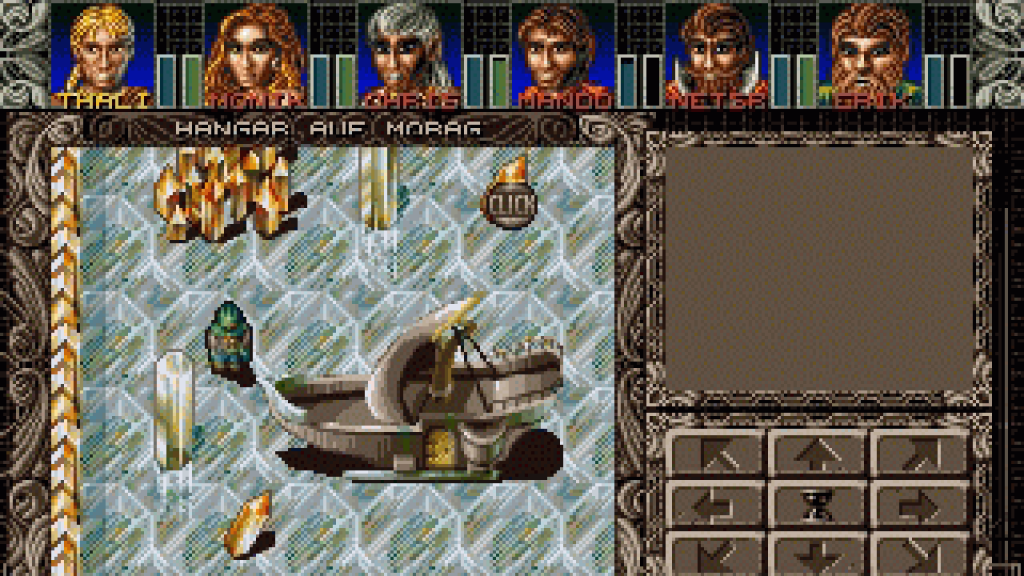

The team were avid readers and fans of Science fiction TV, so when it came to Albion they decided to borrow heavily from a wide array of historical mythologies- and mainstream TV shows. They spent a great deal of care making sure that Albion’s world was internally consistent, as the goal was for all the facets of the game to be married under an umbrella of believability and realism – and for Albion to be designed with purpose and focus.
Most of the detailed worldbuilding was done by Erik Simon. He knew someone who was an expert on Celtic languages, and who helped with the names and words. I contributed a lot on the high-level storyline (which was inspired by Marion Zimmer Bradley’s Mists of Avalon).
Jurie Horneman, programmer on Albion
The team also took help from Blue Byte’s internal talent. Wolfgang Walk was added to the project in order to help strengthen the game’s lore. With a background in writing and philosophy, he assisted in fleshing out the anthropological aspects of the creatures and cultures that the team had conceptualized. Significant effort went into making sure that wherever the player decides to mine for lore, the game would respond with a thorough and all-encompassing explanation of the subject matter.
Ultimately Albion became its own idea; It was a futuristic role-playing game featuring a blend of corporate space expedition and magic naturalism. It became a Science fiction- and Fantasy-blend taking place in an alien world inhabited by humanoid creatures, with Celtic and Arthurian influences borrowed from books such as Mists of Avalon.
All of this was packaged as a picaresque expedition, starring an unassuming audience surrogate who embarks on a series of adventures across a breadth of alien continents and cultures.

Coming back to protagonist Tom Driscoll on board The Toronto; after having explored all the facets of the space ship you’ll now be ready to proceed with your surveying mission and depart for the resource-rich planet dubbed “Nugget.”
On your way to the hangar you encounter seasoned but gregarious government inspector and Xenobiologist Rainer Hofstedt, who – despite readings showing no life forms on the planet – lets you know that he’ll be accompanying you on your trip as per public environmental compliance regulations.
You board your surveying shuttle, embark on your flight and moments later find yourself drifting in space towards your destination. The characters alternate between checking the systems, marveling at the sights and establishing rapport with each other.
Everything seems par for the course when issues suddenly arise with the ship’s communication platform. Moments later the ship’s entire infrastructure begins to fail. The team attempts to take control of the vessel, but find themselves spiraling towards their intended destination at rapid speed. The ship eventually gets caught in the planet’s gravitational field, and is sent shooting towards the surface.
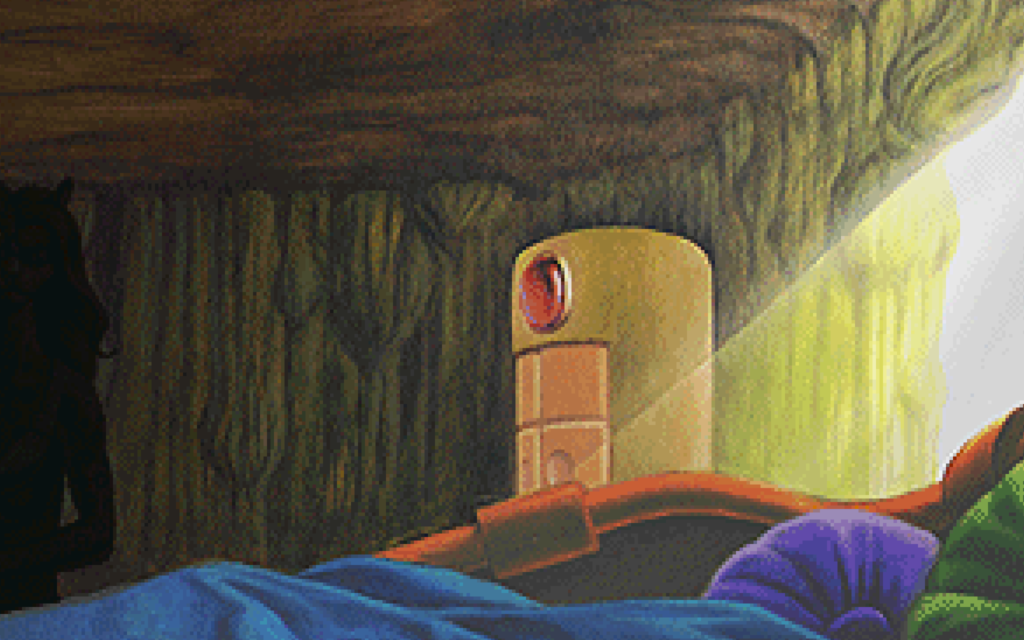
From this moment on, the player is stuck on the alien planet known as Albion. Having been saved by a noble race of humanoids, this marks the beginning of the player’s adventures across an unexpectedly lush world.
Unbeknownst to the player, the beginning on board The Toronto has acted as a microcosm for the remainder of the game. Most of the systems introduced on board the ship – including item management, dialogue systems, object manipulation, puzzles, exploration and side content – are prevalent in tenfold throughout the rest of the game.
As Albion opens up and the player starts engaging in the mechanics of the game, they’ll also start finding themself entrenched in the personal dramas of the planet’s inhabitants. The overarching goal of finding a way home is often helped or hindered by competing interests, political intrigues or warring factions.
It’s not uncommon for circumstances to force the player off the beaten path and into a dungeon or a remote civilization that happens to possess the item or piece of knowledge that is crucial to the player’s quest, but luckily these aspects are varied and rarely play out the same way twice. One moment the player is exploring dilapidated tunnels in search of their space shuttle, the next they’re fighting their way through the ruins of an old guild house in an attempt to bring a political assassin to justice.
The gameplay tends to be equally split between item management, dialogue, bartering, exploration and combat, with perhaps a bit more emphasis on fighting enemies.
If the game’s strongest suit is its worldbuilding, then its weakest side is the combat. Even critics at the time of its release noted the “slow and lengthy combat” and the tedious battle system. The combat – which is done on a 6×5 grid that is shared by both player characters and monsters – is fully turn-based and consists of a continuous back-and-forth between the two sides.

Monsters are often relegated to the world map and dungeons, while civilized creatures can usually be found behind the safety of city walls. The player will usually have a dungeon hanging over them, and in particularly tough cases they might be traveling back and forth to the nearest city in order to offload treasures and load up on rations and items.
Exploration is a major aspect of Albion and comes in three different modes: two top-down 2D views for world maps and indoor areas, and a first-person 3D mode for more immersive areas like towns and dungeons. The game alternates between the modes depending on context, but usually follows a consistent pattern.
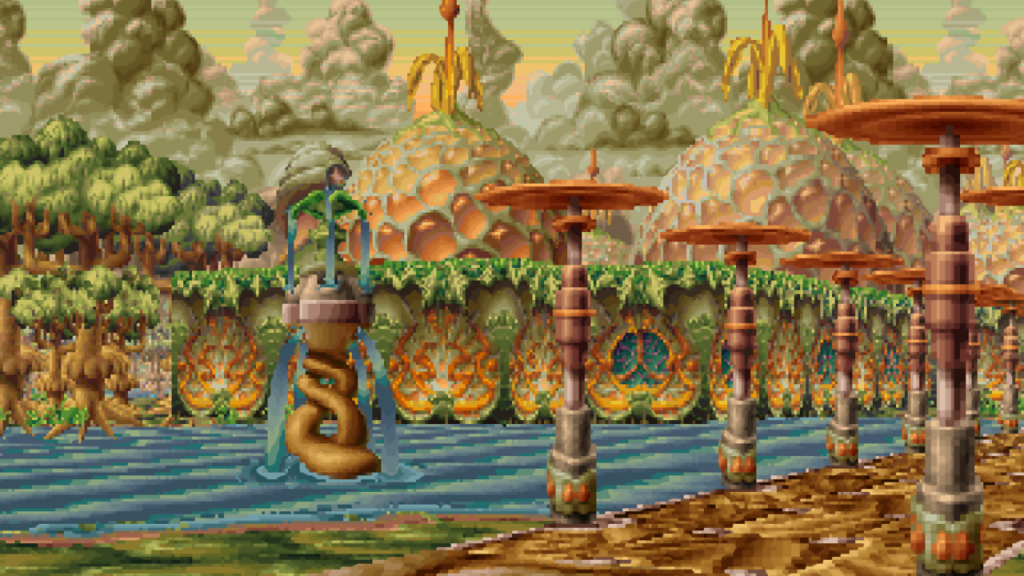
The visuals are another facet of the game that adds to the experience. The art direction invokes a style that is reminiscent of Kathy Altieri (Aladdin) or Bill Tiller (The Curse of Monkey Island), and the strange and whimsical flora and fauna are expressed as well in both 2D and 3D.
As the player makes headway on their adventure, Albion begins to segue thematically. The Science fiction-theme constitute an underlying thread as the protagonists remain ever the white collar surveyors who will view every event through a scientific lens, but as the story evolves the game starts blending in themes of Science fantasy, Mythopoeia, Fairy tale and Hard fantasy.
Albion offers a series of twists and turns through several thematic changes, in the same manner that the game’s beginning segued from spacefaring to fantasy. However, the game’s narrative still manages to insist on an underlying logic that ties everything together. Explanations aren’t offered up-front to the player, but if the player should happen to question any aspect of the in-game universe there’s usually at least one person in the game who possesses a plethora of information on the subject matter.
If an overarching theme is to be identified or a moral of the story is to be defined, Albion can be summarized as a battle between technology, religion and nature – or the rational and irrational. The player character has to decide whether to join the side that is protecting their planet, or the people who are trying to excavate it for precious resources.
The game consistently builds up towards the crescendo without rushing- or compromising for time, and players who are patient enough to deal with the tedious combat system will reach a satisfying conclusion to the adventure.
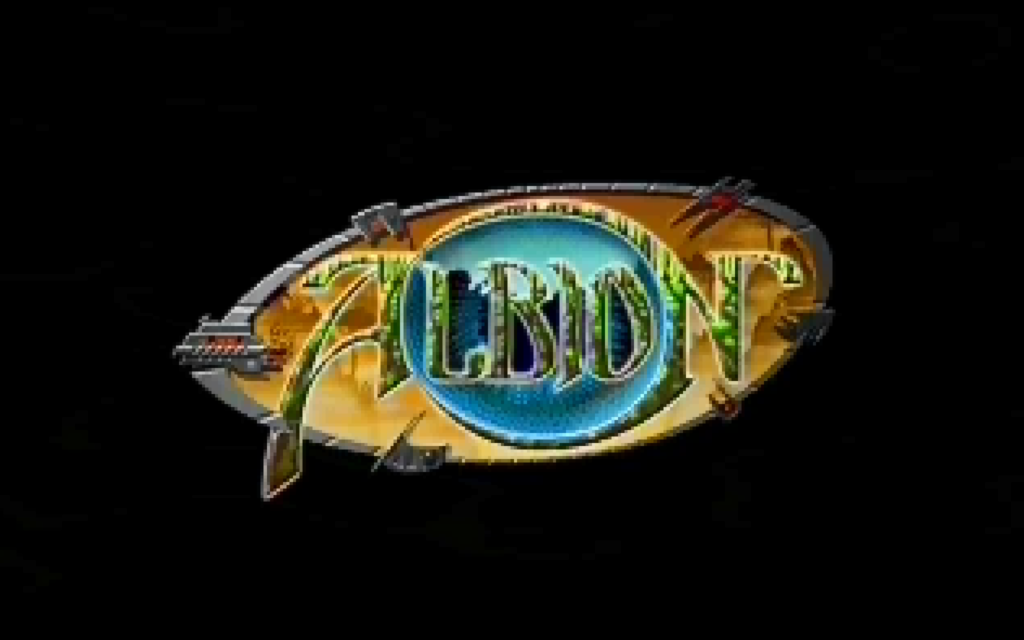
Albion was never a financial success, but much like the Thalion team’s previous titles it was well-received. While the role-playing market was strong at the time that the Albion project was initiated, it wasn’t by the time that it was released – and so the game didn’t get the consideration that it deserved.
Marketing was another facet of the game’s release that perhaps wasn’t up to snuff. As previously mentioned the internal interest in role-playing games was low at Blue Byte Software on account of their history as strategy game developers, so the game didn’t receive the marketing funding that it might’ve needed. With fewer eyeballs on the game, the risk of the game not breaking even was increased.
Albion never got the support it deserved in terms of Marketing and PR. It also had bad luck with timing and came out at a time when RPGs were basically dead in the market.
Wolfgang Walk, writer on Albion
Marketing was hard, especially for a German company trying to compete in the US market. It’s well possible the game could have been more appealing to more people if we’d done some things differently.
Jurie Horneman, programmer on Albion
Whether lucrative or not, the game made its mark by daring to stray from its genre. Whereas other role-playing games might’ve utilized minor variations of established tropes and formulas, Albion attempted to break a significant number of conventions.
Since its release the game has been somewhat re-discovered. Albion has been published on modern game distribution platforms, its engine has been ported to modern operating systems and new fan communities have materialized that are offering speedrunning, lore analysis and discussions revolving around reverse-engineering the game.

Albion was, at least for me, the game that we had the most creative control over. It was made by a small team of people who worked well together, and we worked very, very hard. It’s far from perfect, but I’m very proud to have worked on it, and I’m very glad whenever I hear from people who know and enjoyed the game.
Jurie Horneman, programmer on Albion
I’m proud having been a part of it. And it was the start of two lifelong friendships. So what’s not to love about it. From time to time young students ask me to sign their box. So it has a legacy. I am glad and thankful that I had the chance to grow into the industry at Blue Byte. I met a lot of great people there that I still have contact with and that I do not want to miss in my life.
Wolfgang Walk, writer on Albion
I’m still friends with a lot of guys from back then. These exiting times of having pushed the boundaries of hardware, software- and our own creativity is a life-long bond. Sadly Udo Fischer who was my friend- and main collaborator in those early times passed away much too young of brain cancer, several years ago.
Erik Simon, project lead on Albion
Albion might look like an antiquated game from a bygone era, but it’s the culmination of a journey shared by life-long friends and associates who came together in their youth to try to strike out on their own and do something significant.
Some of the technological innovations that the Thalion team conjured up had far-reaching impacts on early game development, and in some ways they blazed a trail for other game designers to follow.
The people behind these games have since grown up and moved on. Many are still in the game industry. A few of them became family. Some are no longer with us.
In a business world where quality often takes a backseat to speed, Thalion showed what’s possible when talented people commit to doing good work. Albion isn’t perfect, but it remains a testament to hard labor, long weeks, care, creativity and last but not least – good old-fashioned German role-playing ingenuity.

Albion can be purchased and played via GOG.








